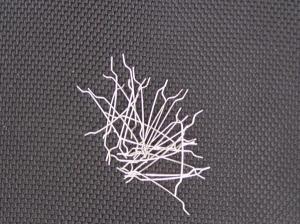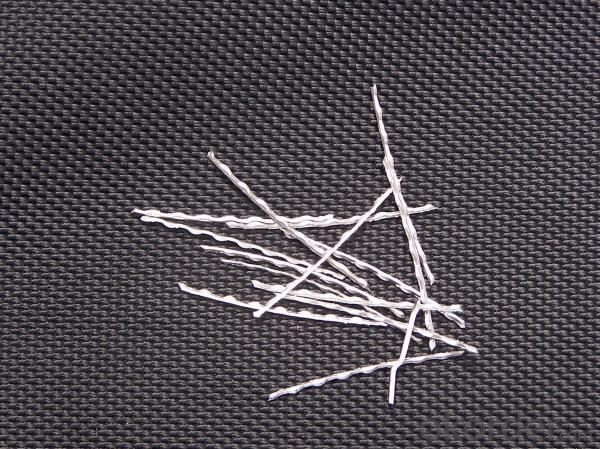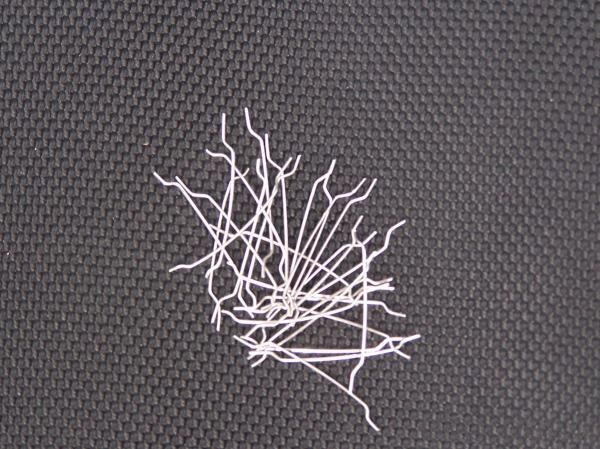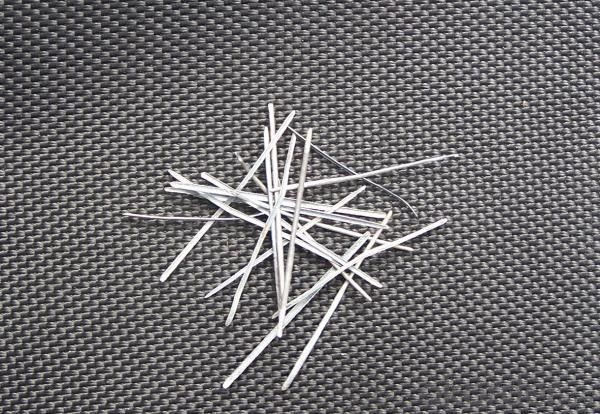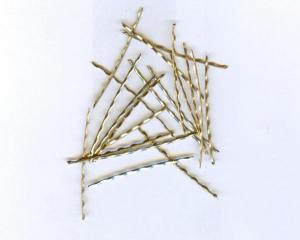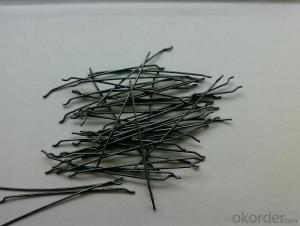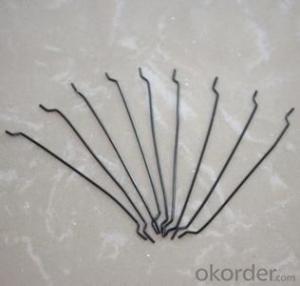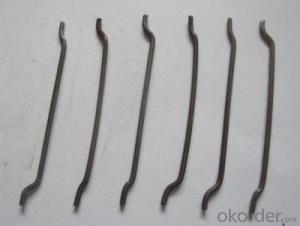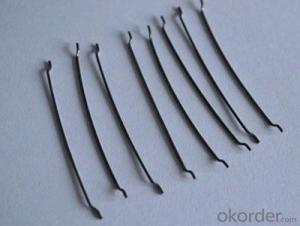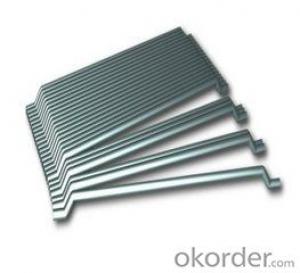Slit Sheet Stainless Steel Fiber 330
- Loading Port:
- China Main Port
- Payment Terms:
- TT or L/C
- Min Order Qty:
- 5 Tons m.t.
- Supply Capability:
- 5000 Tons per Month m.t./month
OKorder Service Pledge
OKorder Financial Service
You Might Also Like
General Information of Slit Sheet Stainless Steel Fiber 330
CMAX cold drawn stainless steel fiber is manufactured by high quality stainless steel wire, mainly used for castable requirements in refractory field, with high tensile strength and low ductility. It can improve refractory performance. Our products can save labor costs.
CMAXmelt extract stainless steel fibercan improve refractories performance and durability, decreasing cost.
CMAX Slit Sheet Stainless Steel Fiber 330 has good performance with the following characteristics:
Light weight
Improve refractories’ performance
Improve refractories’ longevity
Improve refractories’ durability
Significantly reducing downtime and maintance cost

CMAX Slit Sheet Stainless Steel Fiber 330 is available in a wide variety of application:
Refractory products
Precast
Castable project
Industrial furnaces
Other refractories project


Our steel fiber is widely used in the world.Our company has success in its melt extract stainless steel fiberproducts due to their cost-effectiveness and excellent insulating properties. We also have experience in melt extract stainless steel fiberapplication and would like to assist you in product selection, system design, and installation techniques. We can serve the good quality of melt extract stainless steel fiber, We look forward to your cooperation .
- Q:What is melt extract stainless steel fiber?
- Melt extract stainless steel fiber is a type of fiber made from stainless steel through a process called melt extraction. It is used in various industries, including concrete reinforcement, refractories, and composites, to improve the strength, durability, and thermal properties of materials.
- Q:Can melt extract stainless steel fiber be used in airport runways or taxiways?
- Yes, melt extract stainless steel fiber can be used in airport runways or taxiways. Stainless steel fibers are known for their high strength and durability, making them suitable for heavy-duty applications like airport pavements. They can help improve the resistance to cracking and enhance the overall performance and lifespan of the runway or taxiway.
- Q:Can melt extract stainless steel fiber be used in tunnel construction?
- Yes, melt extract stainless steel fiber can be used in tunnel construction. It is commonly used as a reinforcement material in concrete to enhance its strength, durability, and resistance to cracking. Stainless steel fibers can effectively control shrinkage cracks and improve the overall performance of the tunnel structure.
- Q:How does melt extract stainless steel fiber affect the crack width of concrete?
- Melt extract stainless steel fiber has a significant effect in reducing crack width in concrete. When incorporated into the concrete mix, these fibers act as reinforcement, enhancing the overall strength and durability of the material. The fibers are evenly distributed within the concrete matrix, forming a three-dimensional network that helps control cracking. The primary way in which melt extract stainless steel fibers reduce crack width is by preventing crack propagation. As concrete shrinks and undergoes thermal expansion and contraction, small cracks may form. However, the presence of stainless steel fibers acts as a barrier, preventing the cracks from enlarging and spreading throughout the concrete. Furthermore, the unique properties of stainless steel contribute to its effectiveness in reducing crack width. Stainless steel fibers have high tensile strength, allowing them to withstand significant loads and resist deformation. This strength enables the fibers to bridge cracks, providing additional reinforcement to the concrete and preventing further crack propagation. The aspect ratio of the fibers, or the ratio of their length to diameter, also plays a role in controlling crack width. Longer fibers tend to be more effective in limiting crack propagation compared to shorter fibers. Therefore, selecting the appropriate aspect ratio of melt extract stainless steel fibers is crucial in achieving the desired crack control in concrete. In conclusion, melt extract stainless steel fibers have a positive impact on crack width in concrete by minimizing crack propagation. Through their reinforcement properties and ability to bridge cracks, these fibers enhance the overall structural integrity of concrete, resulting in reduced crack width and improved durability.
- Q:Can melt extract stainless steel fiber be used in roller-compacted concrete applications?
- Yes, melt extract stainless steel fiber can be used in roller-compacted concrete (RCC) applications. RCC is a specialized concrete mixture that is compacted using vibratory rollers instead of traditional methods of placement and compaction. The addition of stainless steel fibers in RCC can enhance its mechanical properties and improve its performance. Melt extract stainless steel fibers are specifically designed to provide high tensile strength, durability, and resistance to cracking. These properties make them suitable for use in RCC applications where high strength and resistance to cracking are desired. The stainless steel fibers are evenly distributed throughout the concrete mixture, which helps to reinforce the material and prevent the formation of cracks. This reinforcement also improves the overall toughness and ductility of the RCC, making it more resistant to impact and dynamic loads. Furthermore, melt extract stainless steel fibers are resistant to corrosion, which is particularly important in environments where the RCC may be exposed to harsh conditions, such as high levels of moisture or chemicals. In summary, melt extract stainless steel fibers can be effectively used in roller-compacted concrete applications to enhance the mechanical properties, durability, and resistance to cracking of the material.
- Q:Can melt extract stainless steel fiber be used in tunnel shotcrete applications?
- Certainly, tunnel shotcrete applications can utilize melt extract stainless steel fiber. Shotcrete mixes commonly incorporate stainless steel fibers to enhance the overall performance and durability of the concrete. By introducing stainless steel fibers, the shotcrete's tensile strength, impact resistance, and crack resistance can be improved, making it suitable for tunnel scenarios where the concrete must endure high pressures, vibrations, and potential ground movements. Notably, melt extract stainless steel fibers offer several advantages, such as high tensile strength, corrosion resistance, and uniform dispersion throughout the shotcrete mix. Consequently, the shotcrete benefits from consistent reinforcement and can effectively withstand the rigorous tunnel environment. All in all, melt extract stainless steel fiber serves as a dependable and efficient choice for reinforcing shotcrete in tunnel applications.
- Q:How does the presence of melt extract stainless steel fiber affect the creep behavior of concrete?
- The presence of melt extract stainless steel fiber has a significant impact on the creep behavior of concrete. Creep refers to the gradual deformation of concrete under a sustained load over time. Melt extract stainless steel fibers, being a reinforcement material, enhance the tensile strength and overall performance of concrete. These fibers are typically added to the concrete mixture during the mixing process. The addition of these fibers creates a three-dimensional network within the concrete matrix, which helps to distribute the applied load more evenly. One of the main effects of melt extract stainless steel fibers is the reduction of creep in concrete. These fibers act as internal reinforcements, effectively restraining the movement and deformation of the concrete under load over time. The presence of these fibers helps to improve the long-term stability and durability of concrete structures, as it minimizes the creep-induced deformations. Moreover, the melt extract stainless steel fibers also enhance the cracking resistance of concrete. By reinforcing the concrete matrix, these fibers help to control the propagation of cracks, preventing them from becoming larger and reducing the potential for further damage. This is particularly important in structures that are subjected to high loads or thermal variations, as it helps to maintain the integrity of the concrete over time. In addition to reducing creep and improving cracking resistance, melt extract stainless steel fibers also contribute to the overall mechanical properties of concrete. These fibers increase the flexural strength, impact resistance, and fatigue resistance of concrete, making it more resistant to various types of loads and stresses. Overall, the presence of melt extract stainless steel fibers in concrete has a positive effect on the creep behavior of the material. It reduces the deformation under sustained load, improves cracking resistance, and enhances the overall mechanical properties of concrete, resulting in a more durable and long-lasting construction material.
- Q:What is the effect of melt extract stainless steel fiber on the water absorption of concrete?
- The use of melt extract stainless steel fiber in concrete can have a significant effect on its water absorption. Stainless steel fibers are added to concrete as a reinforcement material, enhancing its mechanical properties such as tensile strength, durability, and crack resistance. In terms of water absorption, stainless steel fibers can help reduce the permeability of concrete. The fibers act as a barrier, preventing the ingress of water into the concrete matrix. This can be particularly beneficial in applications where water penetration needs to be minimized, such as in structures exposed to moisture or in areas with high water content. The addition of melt extract stainless steel fiber can also improve the overall density and compactness of the concrete, thereby reducing the voids and capillary pores through which water can enter. This densification effect further enhances the resistance of the concrete to water absorption. Moreover, stainless steel fibers have a high corrosion resistance, which means they are not susceptible to rusting or degradation when exposed to water. This ensures that the water absorption properties of the concrete remain stable over time, without compromising its structural integrity. Overall, the incorporation of melt extract stainless steel fiber in concrete can significantly reduce its water absorption, improving its resistance to moisture ingress and enhancing its long-term durability.
- Q:How does the addition of melt extract stainless steel fiber impact the shrinkage of concrete?
- Melt extract stainless steel fiber has a substantial impact on the shrinkage of concrete. Its addition enhances the strength, durability, and crack resistance of the concrete. When incorporated into the mix, these fibers reinforce the concrete and reduce its overall shrinkage. Concrete naturally shrinks as it dries and loses moisture. This shrinkage can cause cracks, compromising the structure's integrity and lifespan. However, the addition of melt extract stainless steel fibers minimizes shrinkage and significantly reduces the likelihood of cracks. The stainless steel fibers create a three-dimensional network within the concrete, resisting the tensile forces that occur during shrinkage. This prevents cracks from forming and improves the material's performance by distributing stress throughout. Moreover, melt extract stainless steel fibers improve the behavior of concrete after cracking. If cracks do appear, the fibers act as reinforcement, bridging across the cracks and preventing further propagation. This strengthens the concrete's structure. In conclusion, incorporating melt extract stainless steel fibers into concrete significantly reduces shrinkage and enhances crack resistance. This not only improves the concrete's durability and lifespan, but also ensures its ability to withstand external forces and environmental conditions.
- Q:Can melt extract stainless steel fiber improve the bond strength of concrete to masonry units?
- The use of melt extract stainless steel fiber can enhance the bond strength between concrete and masonry units. Typically employed as reinforcement in concrete, stainless steel fibers are known for their ability to improve mechanical properties, particularly bond strength. Produced by rapidly cooling and solidifying molten stainless steel, melt extract stainless steel fibers possess a high tensile strength. When incorporated into concrete mixes, these stainless steel fibers establish a three-dimensional reinforcement network within the matrix, thereby enhancing the bond between concrete and masonry units. By functioning as miniature anchors, these fibers prevent the separation of concrete from the masonry surface during periods of stress. Consequently, the bond strength is improved, leading to increased durability at the concrete-masonry interface. Furthermore, melt extract stainless steel fibers also contribute to the reduction of micro-cracks in concrete, which further boosts the bond strength. These fibers exhibit resistance to corrosion and possess a high tolerance to alkalis, guaranteeing long-term performance and stability in the concrete-masonry bond. In summary, the addition of melt extract stainless steel fibers to concrete results in a significantly improved bond strength with masonry units, leading to a more resilient and long-lasting structure.
1. Manufacturer Overview |
|
|---|---|
| Location | Henan, China |
| Year Established | 2007 |
| Annual Output Value | Above US$ 60 Million |
| Main Markets | Mid East; Eastern Europe; North America |
| Company Certifications | ISO 9001:2008 |
2. Manufacturer Certificates |
|
|---|---|
| a) Certification Name | |
| Range | |
| Reference | |
| Validity Period | |
3. Manufacturer Capability |
|
|---|---|
| a)Trade Capacity | |
| Nearest Port | Tianjin |
| Export Percentage | 31% - 50% |
| No.of Employees in Trade Department | 21-50 People |
| Language Spoken: | English; Chinese |
| b)Factory Information | |
| Factory Size: | Above 36,000 square meters |
| No. of Production Lines | Above 5 |
| Contract Manufacturing | OEM Service Offered |
| Product Price Range | Average |
Send your message to us
Slit Sheet Stainless Steel Fiber 330
- Loading Port:
- China Main Port
- Payment Terms:
- TT or L/C
- Min Order Qty:
- 5 Tons m.t.
- Supply Capability:
- 5000 Tons per Month m.t./month
OKorder Service Pledge
OKorder Financial Service
Similar products
New products
Hot products
Hot Searches
Related keywords
